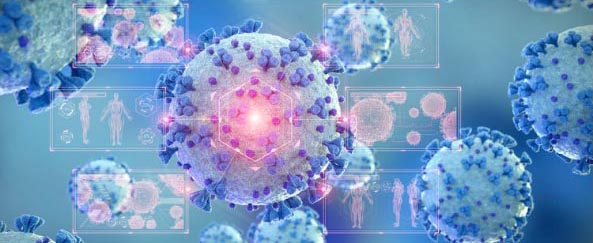|


Antimicrobial Fabrics
Fabrics that Fight the Good Fight
Antimicrobial fabrics. What are they? What are they made of? Why are they effective? Where will we see these specialty fabrics being used?
First, let’s define what 'antimicrobial' means. The Webster's Dictionary definition of the term is “destroying or inhibiting the growth of microorganisms, and especially pathogenic microorganisms.” A fabric that is antimicrobial has the ability to kill microorganisms (including bacteria and fungus) or inhibit their growth. Including a pathogen fighting layer of defense both prolongs the life of the textile as well as protects the fabric surface from microbes. Fabrics can be either inherently antimicrobial or be treated with an antimicrobial finish. Wool fibers, for example, have inherent antimicrobial properties that make the surface less attractive for bacteria, mold, and mildew. Other materials that are less prone to microbial growth on their surface include polyester and polypropylene.
Scientists and textile technologists, using new technologies alongside existing processes, are working in unison to develop innovative, groundbreaking technologies that will undoubtedly change the landscape of common textiles. Here are only a handful of the newest antimicrobial fabric developments from all across the globe:
HeiQ Viroblock
Launched in Switzerland, HeiQ Viroblock NPJ03 is an antiviral and antibacterial textile chemical compound that is added to the fabric during the final stage of the textile manufacturing process which claims to have strong antimicrobial effects against bacteria and enveloped viruses.
Sonovia Non-Contact Coating
In Israel, the Sonovia Group, has developed patents for its non-contact process that uses a sustainable and safe ultrasonic antibacterial coating method, which uses a binderless formulation in a unique application process called “cavitation,” which imparts a greatly improved performance to the fabric.
Wearwell Virustatic Shield
In England, the British workwear manufacturer Wearwell in association with researchers at Manchester University, are using a patented antiviral fabric which uses a unique germ-trapping technology proven to offer 96% protection against viruses.
Hong Kong University of Science and Technology-MAP 1 Coating
Researchers at a Hong Kong University have developed an antiviral coating, called MAP-1, which can be sprayed on surfaces that are frequently used by the public, such as elevator buttons and handrails. The treatment is boosted by heat-sensitive polymers that, upon human contact, encapsulate and release disinfectants from the nano capsules that contain the antiviral chemicals.
IIT Guhwati Spray Coating
In India, the IIT at Guhwati has produced a metal-based chemical spray combining silver and copper nanoparticles into an antiviral cocktail used to limit viral penetration.
Currently, more than ever before, fabrics that are antimicrobial or those that can withstand a rigorous cleaning protocol that is in line with the CDC guidelines for disinfection are highly sought after. Historically having a primary place in healthcare settings, antimicrobial fabrics will certainly start to be seen across multiple platforms and in various applications not often seen before.
If you are interested in some additional reading on the topic of antimicrobial fabrics, check out this article written by Dr. Benjamin Tanner originally published in AATCC (American Association of Textile Chemists and Colorists) Review.

Be sure to check in with the IIDA New England calendar for upcoming virtual events offered in our community. Here's a sneak peek at some upcoming events:


Did you know that the application of natural antimicrobial agents on textiles dates back to antiquity when the ancient Egyptians used spices and herbs to preserve mummy wraps?
Check out the list of IIDA New England Emerging Leaders Class of 2020!
Do you have an idea that you would like to share with the design community or see highlighted here in The Wire? Send your ideas to [email protected]. |
|